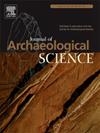使用半自动方法在水深数据中进行沉船检测:结合机器学习和地形推断方法
IF 2.5
1区 地球科学
Q1 ANTHROPOLOGY
引用次数: 0
摘要
本研究提出了一种将新兴机器学习方法与地理空间映射技术相结合的工作流程,以提高测深数据中沉船的识别。通过首先将研究区域细化为高潜力单元,机器学习算法可以更有效地应用。这种方法加速了过程,减少了计算需求,并提供了一种自适应方法,最终可以根据调查需求和不同的海底环境进行定制。在全球海底测绘、自主海洋调查的发展和持续的近海开发的背景下,本文对当前围绕水下文化遗产(UCH)的发现和管理的讨论做出了贡献。沉船残骸占联合王国遗址的很大一部分,这些遗址越来越有可能被发现并受到这些发展的影响,因此考古学家需要足够的工具来快速发现和监测沉船残骸,以跟上数据生成的速度。所提出的工作流程使用栅格提取方法作为过滤过程,根据三种不同的测深可视化(斜率、曲率和地形位置指数)中的地形特征来识别具有高沉船可能性的海底区域。利用这些结果,测试了几种不同的机器学习算法识别完整的、可见的沉船(“显眼的”沉船)以及较小的、可能的沉船地点的能力。这些方法在距离英格兰南海岸3131平方公里的区域内进行了测试。结果表明,Raster Extraction方法能够过滤掉96%的测试数据,同时仍然检测到78%的测试沉船(n=253)。在不同的数据可视化(Hillshade, shade Relief, Curvature)和算法(Single Shot Detector, Faster R-CNN和Mask R-CNN)上训练的机器学习模型在召回率和精度方面表现不同。本文章由计算机程序翻译,如有差异,请以英文原文为准。

Shipwreck detection in bathymetry data using semi-automated methods: Combining machine learning and topographic inference approaches
This research presents a workflow that integrates emerging machine learning methods with geospatial mapping techniques to improve the identification of shipwrecks in bathymetry data. By first refining the study area into high-potential units, machine learning algorithms can be applied more efficiently. This approach accelerates the process, reduces computational demands, and offers an adaptive method that can eventually be tailored to survey needs and different seabed environments. This paper contributes to the current discourse surrounding the discovery and management of underwater cultural heritage (UCH) in the context of global seabed mapping, developments in autonomous marine survey, and continued offshore development. Shipwrecks constitute a significant proportion of UCH sites that are increasingly likely to be discovered and impacted by these developments, and thus archaeologists need adequate tools for their rapid detection and monitoring to keep pace with the rate of data generation.
The proposed workflow uses a raster extraction method as a filtering process to identify areas of seabed with high shipwreck potential, based on their topographic signature in three different visualisations of bathymetry (slope, curvature, and topographic position index). Using these results, several different machine learning algorithms were tested on their ability to identify both intact, visible shipwrecks (‘conspicuous’ wrecks) as well as smaller, possible wreck sites. These methods were tested over an area of 3,131 km2 from the south coast of England. Results show that the Raster Extraction method was able to filter out 96% of the test data, while still detecting 78% of the test shipwrecks (n=253). Machine learning models trained on different data visualisations (Hillshade, Shaded Relief, Curvature) and algorithms (Single Shot Detector, Faster R-CNN, and Mask R-CNN) had varied performances in terms of recall and precision.
求助全文
通过发布文献求助,成功后即可免费获取论文全文。
去求助
来源期刊

Journal of Archaeological Science
地学-地球科学综合
CiteScore
6.10
自引率
7.10%
发文量
112
审稿时长
49 days
期刊介绍:
The Journal of Archaeological Science is aimed at archaeologists and scientists with particular interests in advancing the development and application of scientific techniques and methodologies to all areas of archaeology. This established monthly journal publishes focus articles, original research papers and major review articles, of wide archaeological significance. The journal provides an international forum for archaeologists and scientists from widely different scientific backgrounds who share a common interest in developing and applying scientific methods to inform major debates through improving the quality and reliability of scientific information derived from archaeological research.
 求助内容:
求助内容: 应助结果提醒方式:
应助结果提醒方式:


